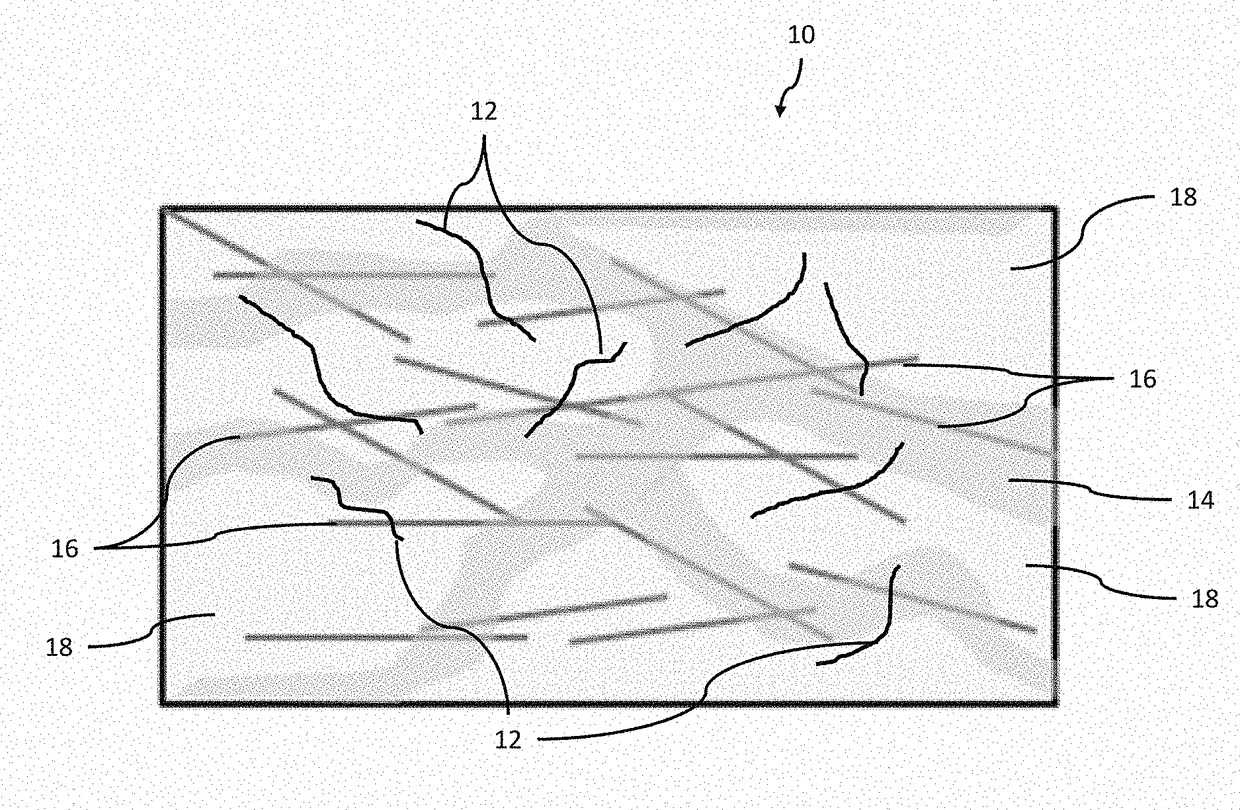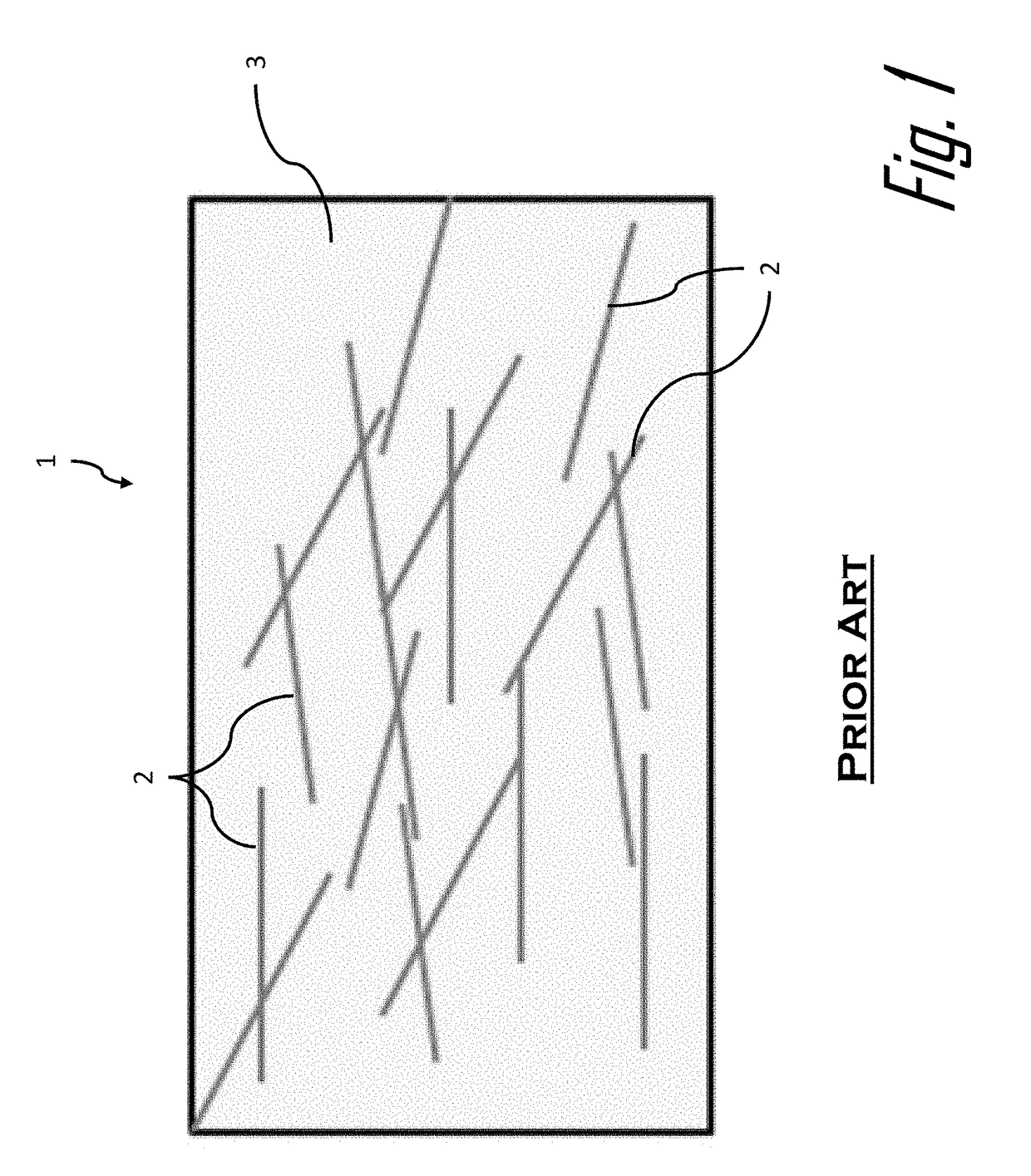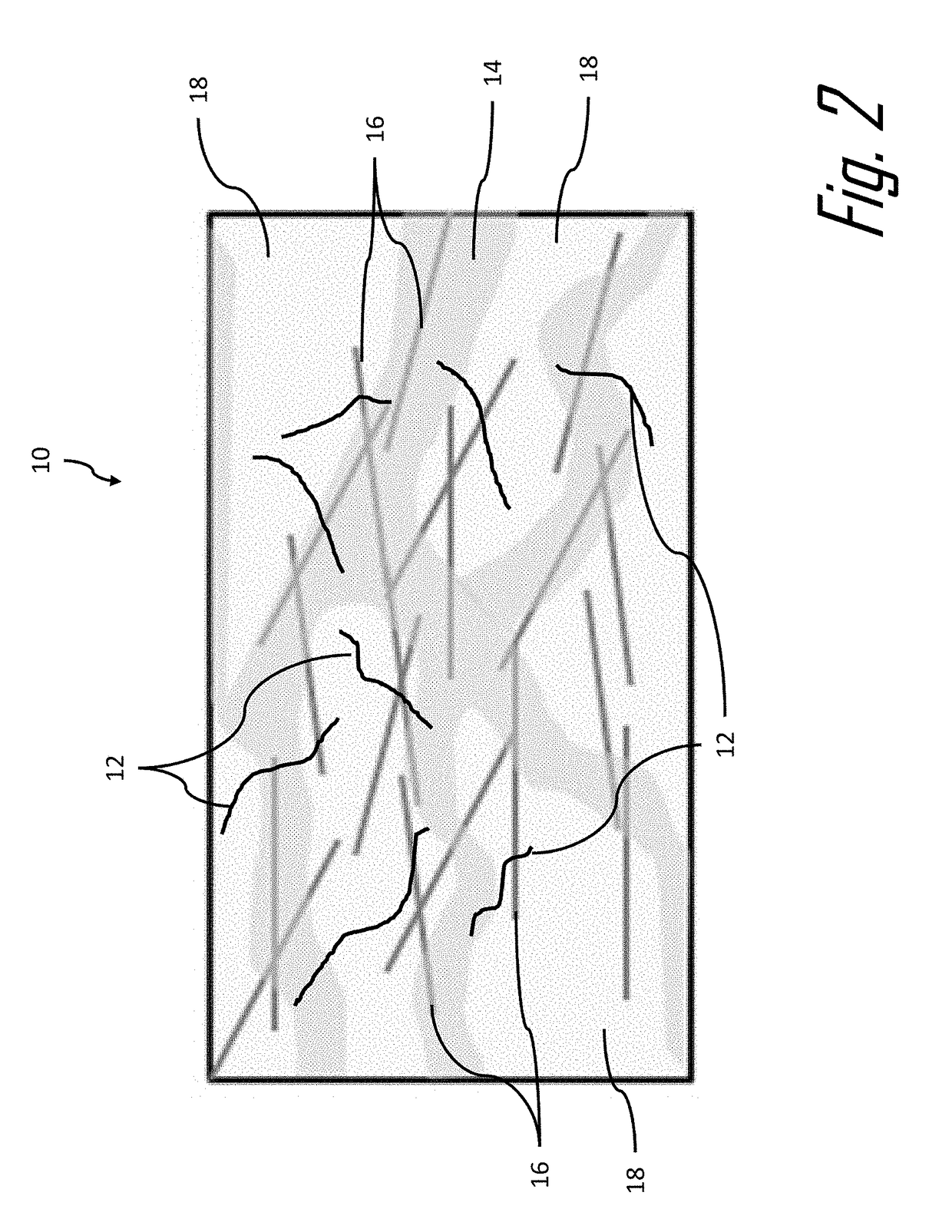Electrically conductive hybrid polymer material
a hybrid polymer and polymer technology, applied in the direction of non-metal conductors, coupling device connections, cables, etc., can solve the problems of increasing the part count of metal shields, requiring extra manufacturing steps to assembly, and adding weight to the finished produ
- Summary
- Abstract
- Description
- Claims
- Application Information
AI Technical Summary
Benefits of technology
Problems solved by technology
Method used
Image
Examples
Embodiment Construction
[0019]A electrically conductive hybrid polymeric material, hereinafter referred to as a hybrid conductive polymer, is presented herein. The hybrid conductive polymer is a combination of a nonconductive polymeric base material, such as polyethylene, polypropylene, polyvinyl chloride, acrylic, polyester, polybutylene terephthalate, acrylonitrile butadiene styrene, or polyamide, a conductive polymeric material, e.g. an inherently conductive polymer, a radical polymer, or an electroactive polymer, and conductive filler particles, such as carbon nanotubes, graphite nanoparticles, graphene nanoparticles, fullerene nanoparticles, stainless steel fibers, metal nanowires, or metal plated carbon fibers, e.g. copper plated carbon fibers or nickel plated carbon fibers.
[0020]The combination of a conductive polymer in addition to conductive fillers allows improved connection between the network formed by the conductive filler particles. The orientation of the conductive filler particles must be r...
PUM
| Property | Measurement | Unit |
|---|---|---|
| Temperature | aaaaa | aaaaa |
| Temperature | aaaaa | aaaaa |
| Fraction | aaaaa | aaaaa |
Abstract
Description
Claims
Application Information
 Login to View More
Login to View More - R&D
- Intellectual Property
- Life Sciences
- Materials
- Tech Scout
- Unparalleled Data Quality
- Higher Quality Content
- 60% Fewer Hallucinations
Browse by: Latest US Patents, China's latest patents, Technical Efficacy Thesaurus, Application Domain, Technology Topic, Popular Technical Reports.
© 2025 PatSnap. All rights reserved.Legal|Privacy policy|Modern Slavery Act Transparency Statement|Sitemap|About US| Contact US: help@patsnap.com



